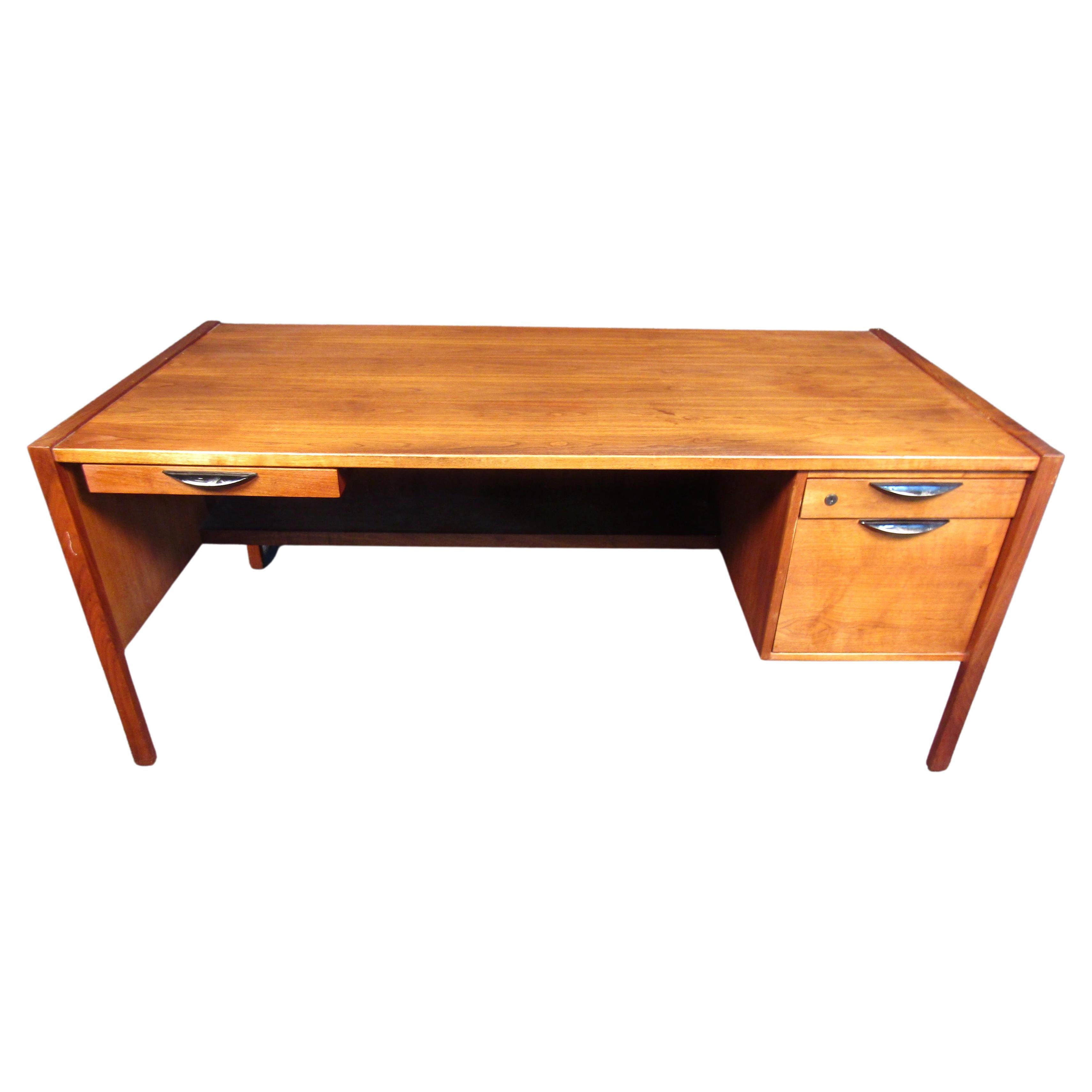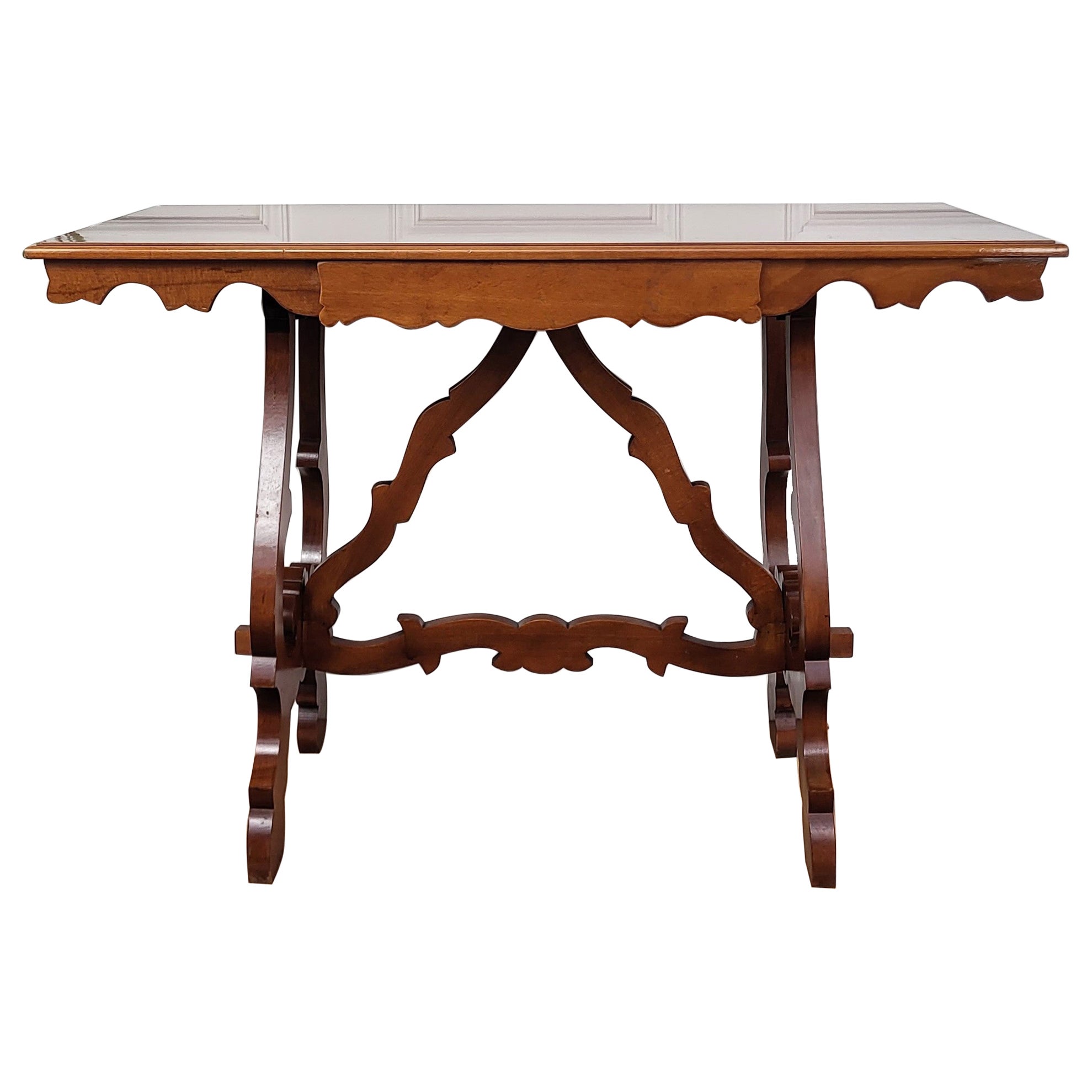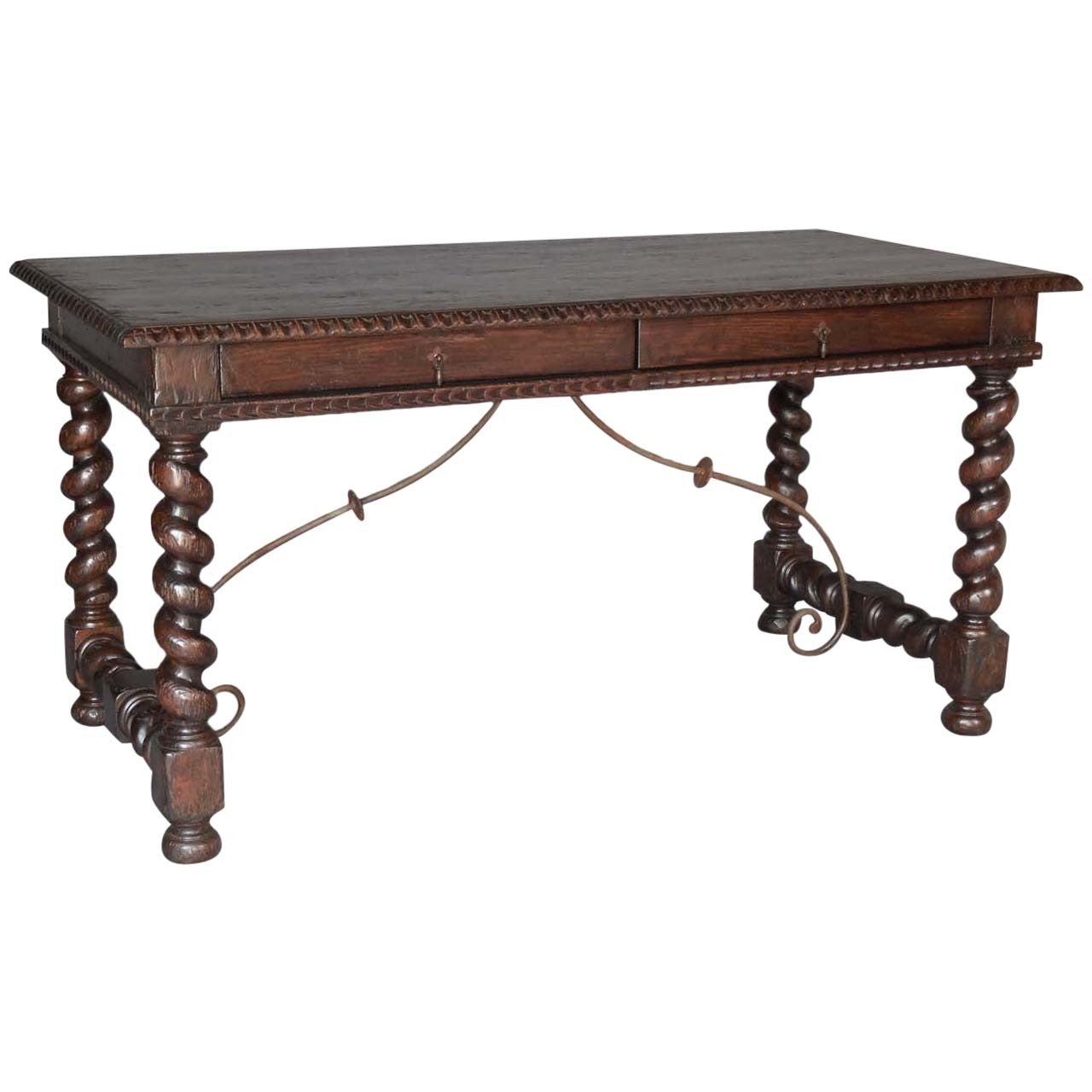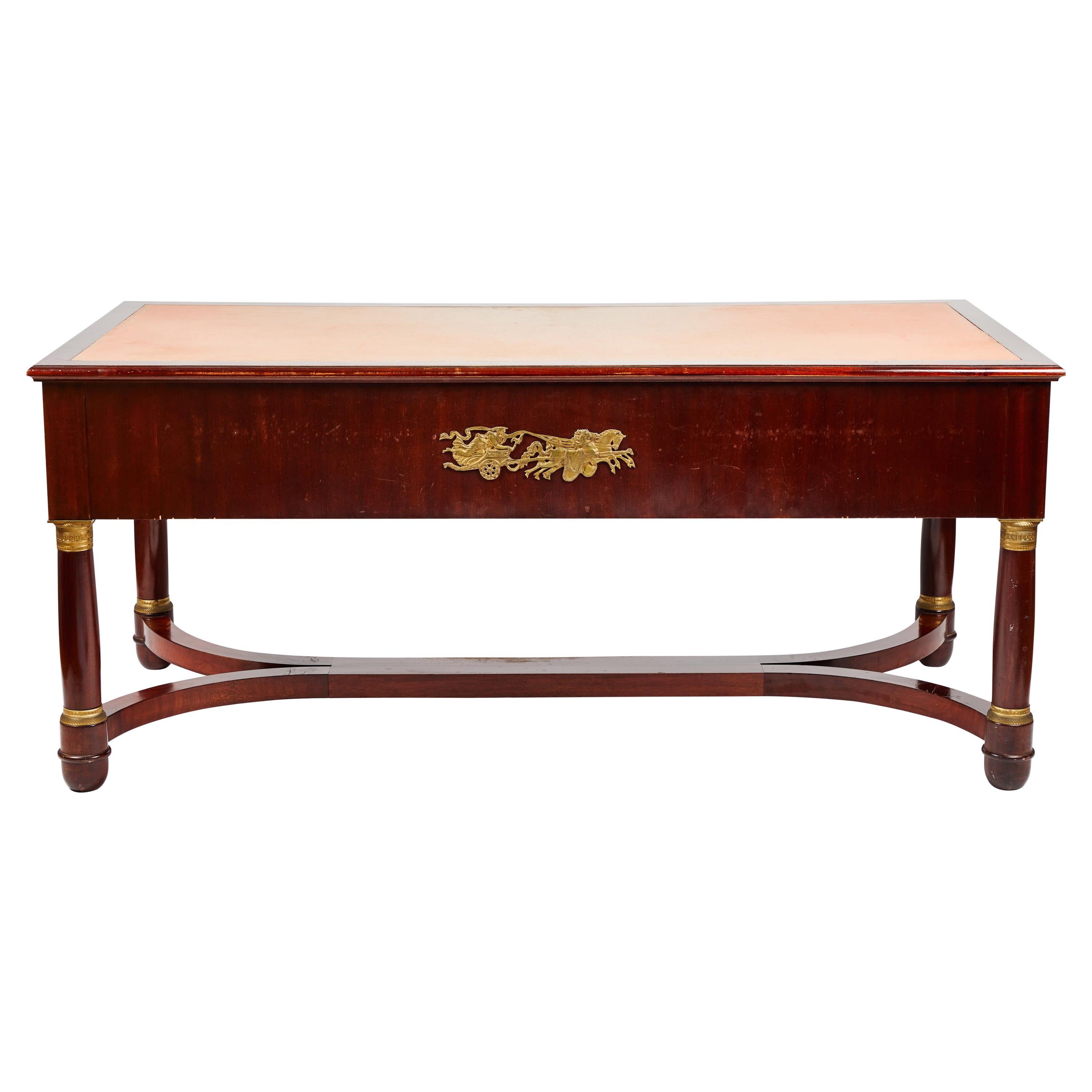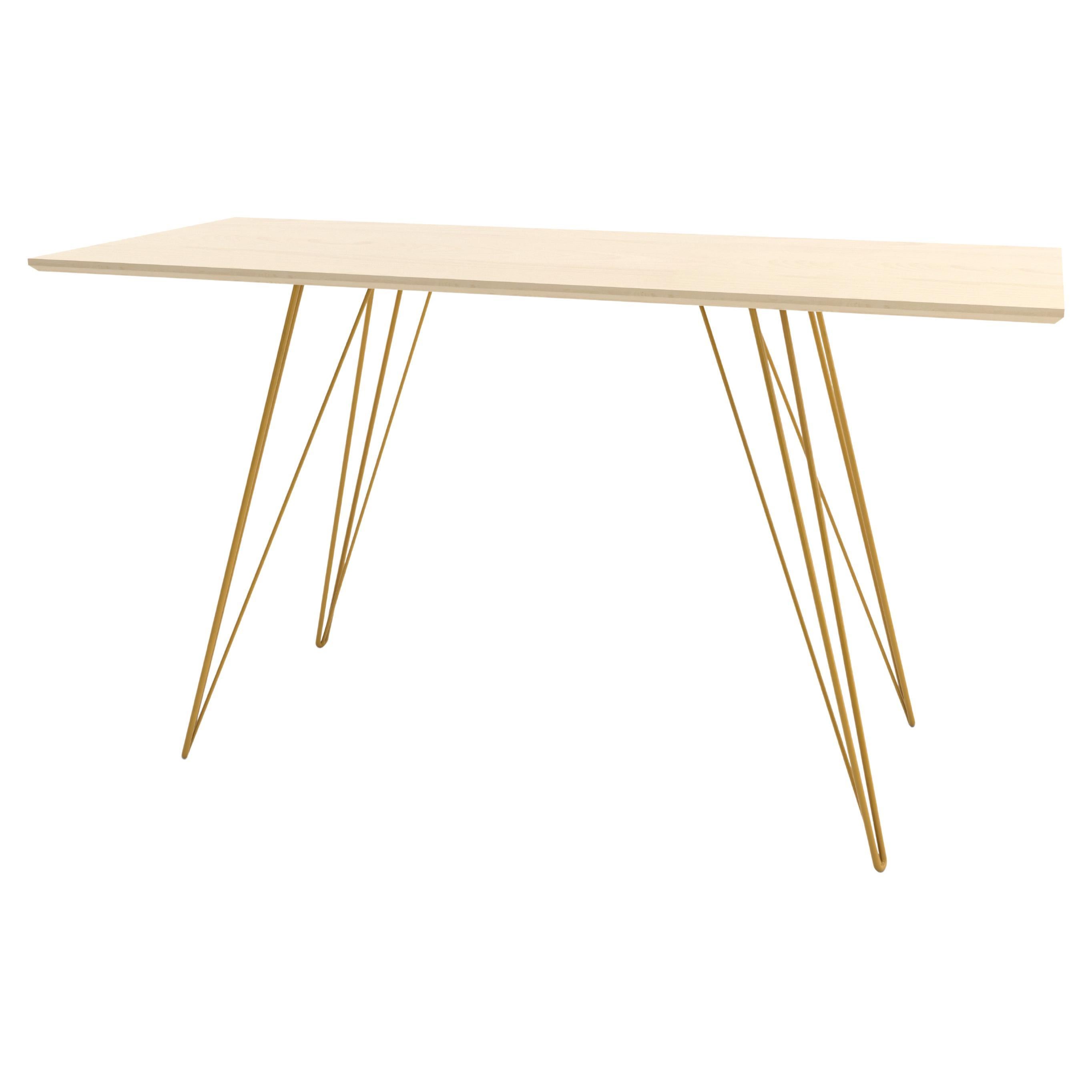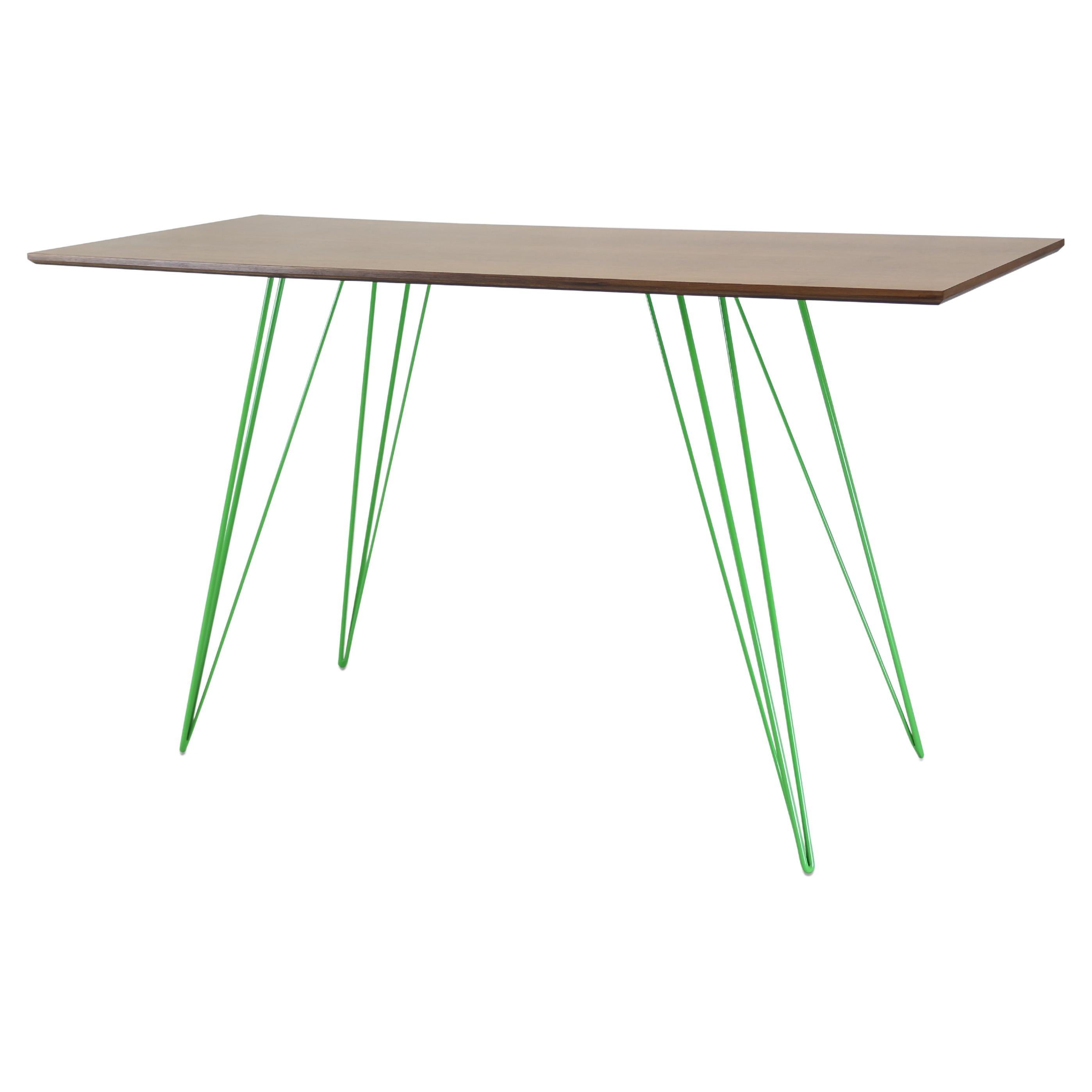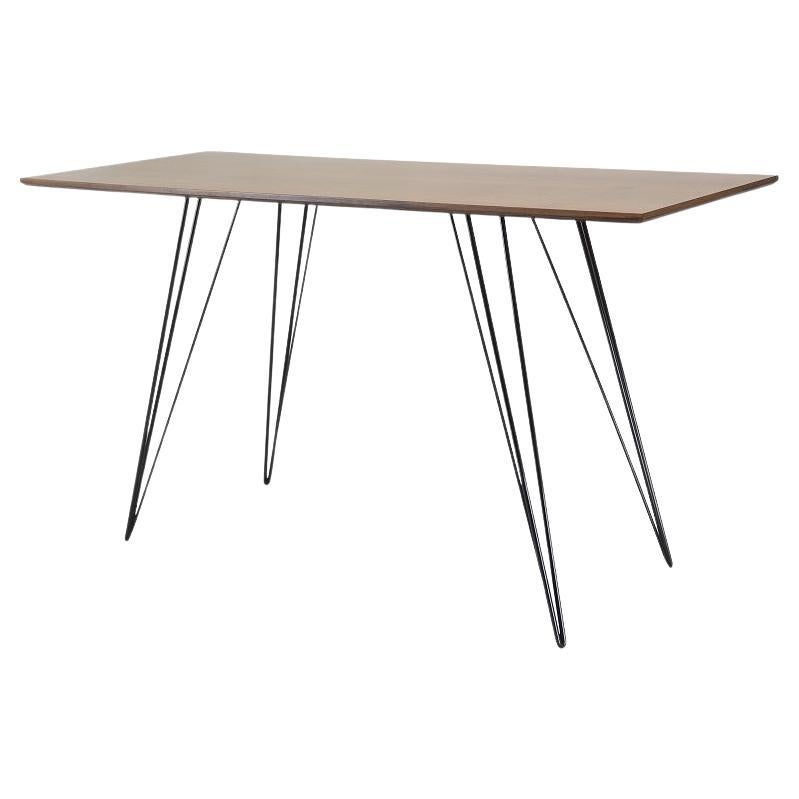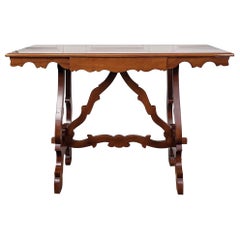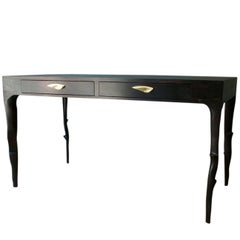
Modern - Wilde - Branch-Shaped Legs Writing Desk
View Similar Items
1 of 11
Modern - Wilde - Branch-Shaped Legs Writing Desk
About the Item
- Creator:NB Milano (Designer)
- Dimensions:Height: 30.32 in (77 cm)Width: 27.56 in (70 cm)Depth: 55.12 in (140 cm)
- Materials and Techniques:Beech,Ebonized
- Place of Origin:Italy
- Period:2010-
- Date of Manufacture:2017
- Production Type:New & Custom(Current Production)
- Estimated Production Time:13-14 weeks
- Condition:
- Seller Location:Milan, IT
- Reference Number:1stDibs: LU3690311012131
You May Also Like
- Italian Walnut Baroque Style Lyre-Leg Trestle Refectory Desk Writing TableLocated in Carimate, ComoItalian Baroque style desk, or writing table with lyre shaped legs and joint with a central drawer. Finished on all four sides enabling it to be used against a wall as well as a cent...Category
Late 20th Century Italian Baroque Desks and Writing Tables
MaterialsWood
- Vintage Modern Walnut Writing Desk by Harvey ProbberBy Harvey ProbberLocated in Brooklyn, NYMid-century modern writing desk by Harvey Probber. This desk features walnut construction, ample leg room, and three drawers for storage of files and odds and ends. A beautiful vinta...Category
Vintage 1960s Mid-Century Modern Desks and Writing Tables
MaterialsWalnut
$2,800 Sale Price30% Off - Italian Smaller-Sized Table or Writing Desk w/Shapely Hourglass Legs, 19th C.Located in Atlanta, GAAn Italian small sized table, or writing desk, from the 19th century. This antique table from Italy features a rectangular-shaped top overhanging an apron fitted with a single drawer at one long side. The table is raised on a pair of hour-glass shaped legs flanking either side, with beautifully carved outer edges. A wooden stretcher bar adds support between the legs and is carved with a small arch at center and pierced cut-out embellishment. The medium tone wood has an old patina throughout, a lovely reflection of it's age. The leg clearance at the underside of this piece is 25.25 inches in height. This 19th century table with shapely hourglass legs would make a delightful little writing desk...Category
Antique 19th Century Italian Desks and Writing Tables
MaterialsWood
- Dos Gallos Custom Writing Desk with Spiral Legs, Drawers and Iron SupportsBy Dos Gallos StudioLocated in Los Angeles, CAOur Custom Salamanca two-drawer oak writing desk with iron supports. Hand-carved details throughout. Iron pulls. Beautiful patina. Can be made in any size, and finish. Can also be ma...Category
21st Century and Contemporary American Spanish Colonial Desks and Writin...
MaterialsIron
- Six Leg Table / DeskLocated in Chicago, ILSix leg table / desk with two drawers and excellent patina.Category
Vintage 1920s Italian Tables
MaterialsWood
$13,800 - Régence Style Marquetry Writing DeskLocated in Brighton, West SussexA magnificent and very rare Régence style marquetry inlaid grand bureau plat or writing desk. Inscribed to the carcass 'Moreaux 72'. Dating from the second half of the nineteenth century this magnificent and very rare bureau plat has finely cast rocaille gilt-bronze mounts and is decorated overall with truly breath-taking seventeenth century marquetry, depicting fantastical townscapes, knights, soldiers, hunting and architectural-scenes. Of serpentine rectangular form the top is veneered with superb marquetry panels within a foliate scrolled border and a rocaille shell-cast gilt-bronze surround, both sides featuring a recessed central drawer flanked on each side by a drawer applied with male and female terms, scrolled handles, and reserves with conforming drawers; the bombé sides are centred by foliate scrolls, and the whole raised on cabriole legs headed by cartouches with foliate entwined chutes terminating in scrolled sabots. Of impressive scale this fine bureau plat, in the manner of a partners desk, features working drawers to each side. This model of bureau plat was made by a small number of celebrated Parisian cabinet makers in the second half of the 19th century including Beurdeley, Cremer and Befort Jeune. It is incredibly rare to see this model of bureau plat inlaid in marquetry. The exceptional quality and style indicate the use of older reused marquetry, almost certainly dating from the late 17th century and originating from the Augsburg region of Germany. Similar models but lacking the exceptional marquetry inlay can be found in the collection of the Duke of Buccleuch at Bowhill, and the Earl of Normanton at Somerlely. Christopher Payne notes that the latter was part of a pair sold by the London dealer Toms & Luscombe in 1871. He illustrates the present bureau plat in his book ‘European Furniture of the 19th Century’ (p. 88-89), along with two related desks minus the marquetry inlay (p. 92 -93). The exceptional and highly complex marquetry inlay and intarsia work, that sets this important bureau plat apart from other extant examples, would originally have formed the decorative panels of a late 17th century table cabinet, almost certainly ascribable to the Augsburg region of Germany. Augsburg emerged from the middle of the 16th century as the German centre of luxury cabinet making for the international market. In particular, the development of marquetry contributed to this prominent position, favoured by the ready availability of indigenous woods and the reputation that Augsburg had the best craftsmen able to cut thin layers of veneers in the most intricate motifs (C.S. Wood, ‘The Perspective Treatise in Ruins: Lorenz Stöer, Geometria et perspectiva, 1567’, Studies in the History of Art, no. 59, p. 246). Table cabinets, conceived as a form of Wunderkammer or cabinets of curiosities, were intended as repositories for all manner of wondrous and exotic objects and by the 1550s the grandest cabinets in Europe were being made in Augsburg. Decorated almost entirely with sumptuous marquetry, often depicting perspective views of ruins and fantastical townscapes, they become by the 1590s highly regarded as important diplomatic gifts. Fine Augsburg marquetry panels remained popular throughout the ages and were frequently re-used to create or embellish new items of furniture, such as this magnificent bureau plat. Their inclusion was not only for their highly decorative appeal, but to contemporary eyes, a means by which to imbue a new creation with a sense of true historical authenticity. The importance of such panels is often reflected in the high cost involved in repurposing them. A fine example of this is the celebrated 17th century cabinet on stand...Category
Antique Mid-19th Century French Louis XV Desks and Writing Tables
MaterialsOrmolu
